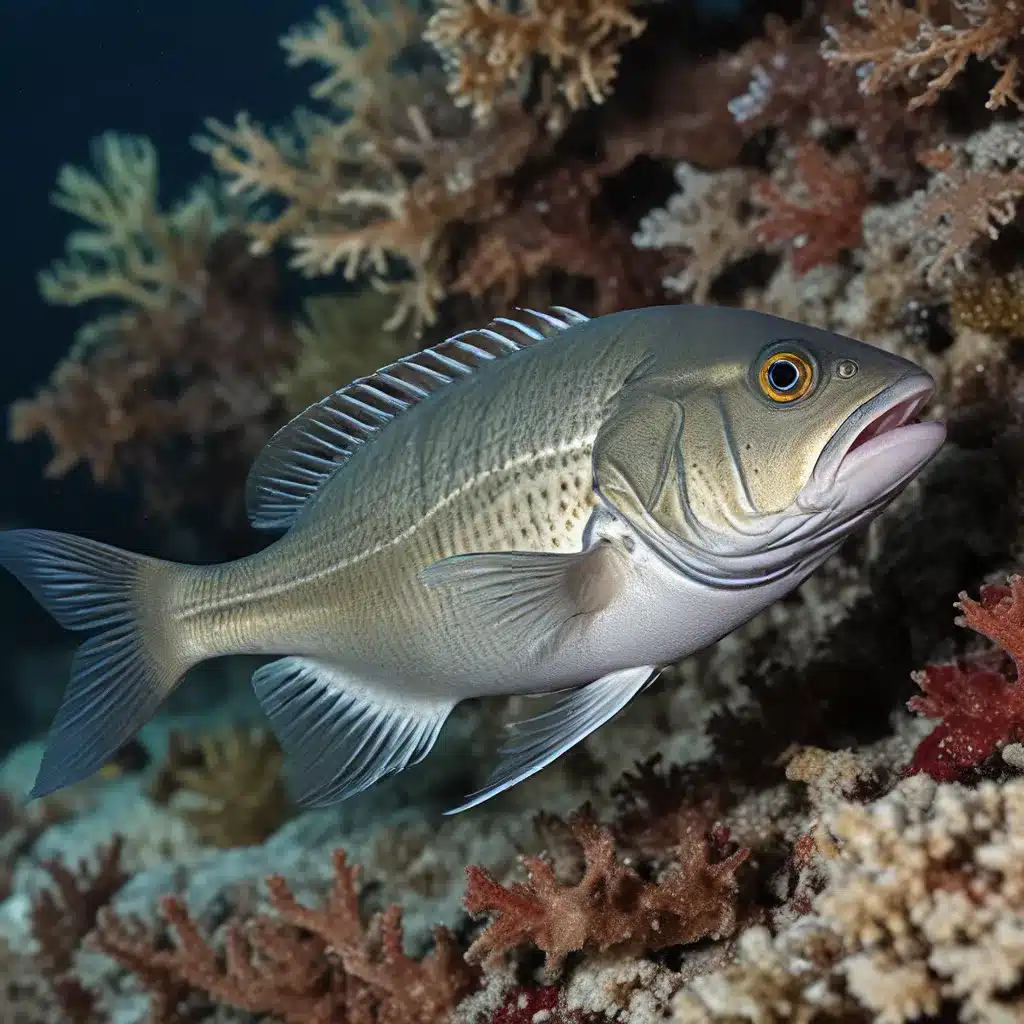
Unveiling the Hidden Gems of the Underwater Realm
Imagine an underwater world teeming with life, where vibrant coral reefs and lush seascapes conceal a secret society of captivating fish species. These cryptic marine fish are the intriguing, often-overlooked inhabitants that dwell in the crevices, burrows, and turbid waters of our planet’s coastal ecosystems.
Contrary to the colorful, conspicuous denizens that captivate visitors, these shy, elusive creatures possess a remarkable ability to blend seamlessly into their surroundings. Their camouflage and secretive nature make them challenging to observe, let alone study and catalog. Yet, it is precisely this hidden diversity that holds the key to unlocking a deeper understanding of our marine environments.
Researchers have found that these cryptic species can make up nearly half the fish fauna in some tropical shoreline habitats. Their importance cannot be overstated, as they play crucial roles in the intricate web of life that sustains the health and resilience of our coastal ecosystems.
Overcoming the Challenges of Studying Cryptic Fish
Studying and documenting these enigmatic fish species presents a unique set of challenges for researchers and marine biologists. Traditional visual surveys often fail to capture the true diversity of a given area, as many cryptic species remain hidden from view, tucked away in crevices, burrows, and murky waters.
Rotenone, a natural substance derived from leguminous plants, has emerged as a powerful tool for overcoming these challenges. When applied in small, diluted quantities, rotenone can temporarily disorient and expose these elusive creatures, allowing researchers to collect and study them in detail.
Researchers have found that the use of rotenone can nearly double the number of species documented in a given area, unveiling a wealth of previously undiscovered biodiversity. This technique has been instrumental in the development of comprehensive identification guides, enabling a deeper understanding of tropical shore fish faunas.
However, the use of rotenone in marine research has faced increasing restrictions in many countries, driven by misconceptions about its environmental impact. It is crucial for resource managers and policymakers to understand the vital role that this tool plays in advancing our knowledge of marine biodiversity and supporting conservation efforts.
Unraveling the Secrets of Cryptic Fish Species
Cryptic marine fish species belong to a diverse array of families, representing a significant portion of the overall fish fauna in tropical and subtropical shoreline habitats. These hidden gems can include a wide range of species, from tiny gobies and blennies to stealthy predators like scorpionfishes and venomous sea catfishes.
Aquarium enthusiasts and hobbyists may be familiar with some of these captivating species, as they have become increasingly sought-after for their unique appearances and fascinating behaviors. However, the majority of cryptic fish species remain largely unknown to the general public, their stories waiting to be told.
Through the use of targeted rotenone surveys and advanced diving techniques, researchers have been able to uncover a wealth of information about these hidden inhabitants. They have documented their habitat preferences, feeding behaviors, and ecological relationships, shedding light on the intricate tapestry of life that thrives beneath the waves.
Conserving the Hidden Wonders of the Underwater World
As coastal ecosystems face unprecedented threats from climate change, pollution, and human activities, the importance of understanding and protecting cryptic marine fish species has never been greater. These elusive creatures, often with narrow geographic ranges and specialized habitat requirements, are among the most vulnerable to local or global extinction.
Comprehensive surveys and biodiversity assessments facilitated by the use of rotenone have been instrumental in identifying critical habitats and biodiversity hotspots that require immediate conservation attention. This information has been pivotal in the establishment of marine protected areas and the implementation of targeted conservation strategies.
By unveiling the hidden diversity of our coastal waters, we can better safeguard the delicate balance of these fragile ecosystems. Each cryptic species, like a unique thread in the tapestry of life, plays a vital role in maintaining the overall health and resilience of our marine environments.
Embracing the Future of Cryptic Fish Research and Conservation
As we continue to explore the unexplored realms of our oceans, the need for responsible and ethical research practices becomes increasingly paramount. While the use of rotenone in marine research has faced challenges, it remains a valuable and irreplaceable tool in the quest to unravel the secrets of cryptic fish species.
Through open dialogue, scientific collaboration, and evidence-based policymaking, resource managers and researchers must work together to ensure that the critical role of rotenone-based surveys is recognized and supported. By doing so, we can unlock the vast potential of our coastal ecosystems, empowering us to make informed decisions that safeguard these hidden wonders for generations to come.
As we navigate the diverse world of cryptic marine fish species, let us embrace the spirit of curiosity and discovery that has driven researchers and aquarists alike. By shining a light on these elusive inhabitants, we can cultivate a deeper appreciation for the intricate tapestry of life that lies beneath the waves, and inspire a renewed commitment to the conservation of our precious marine resources.

